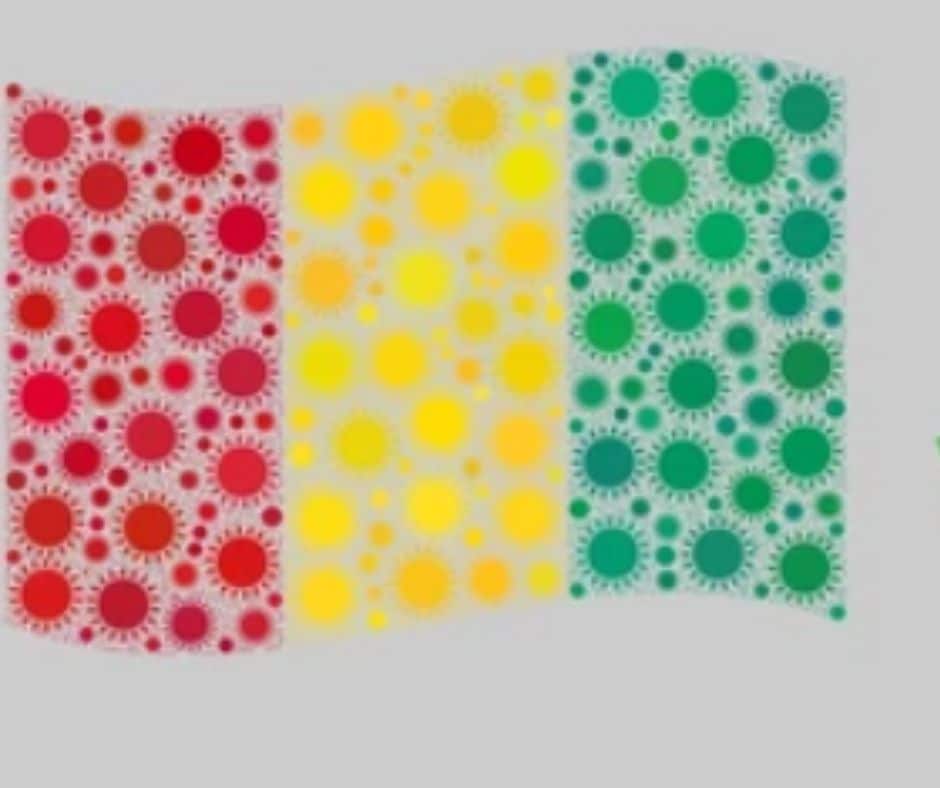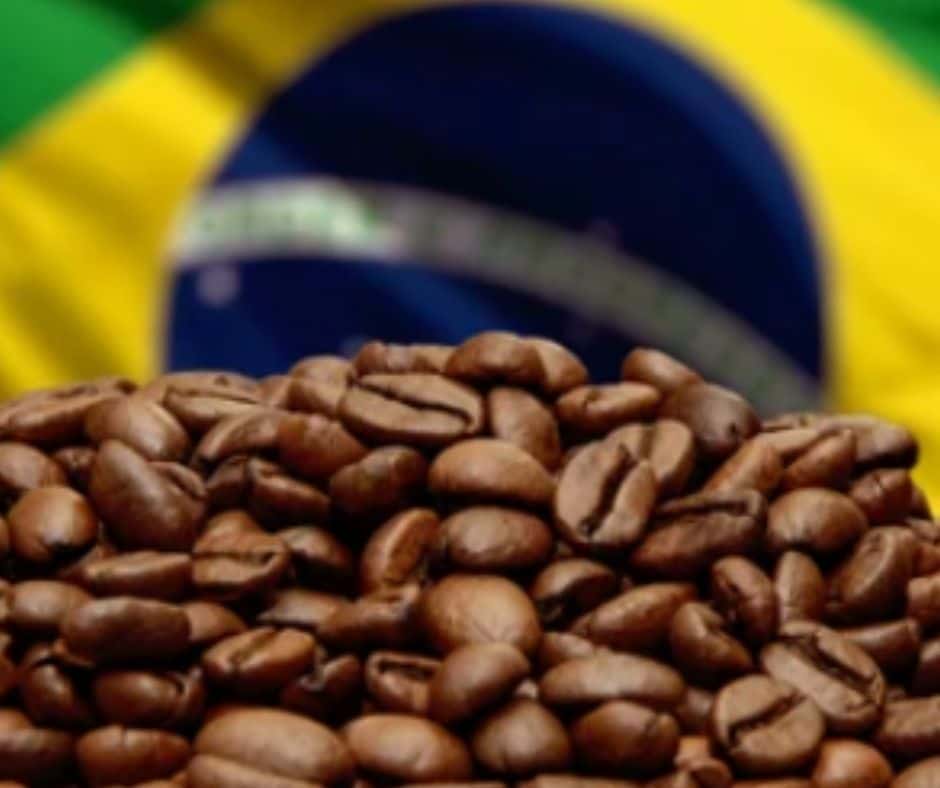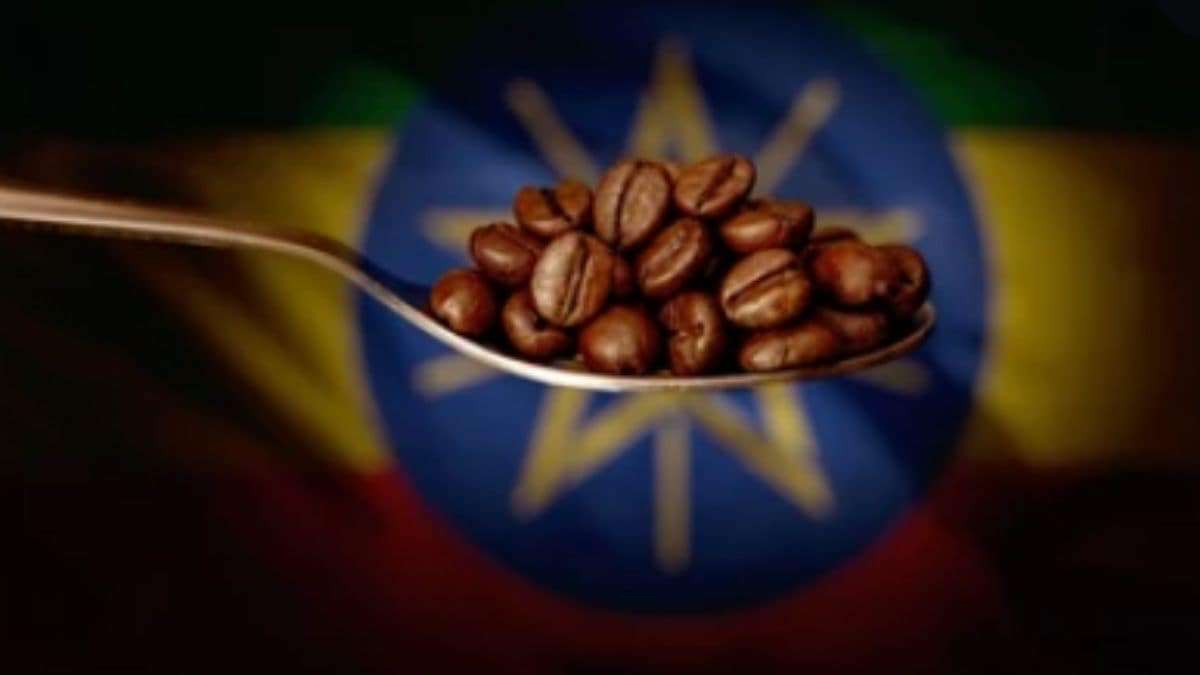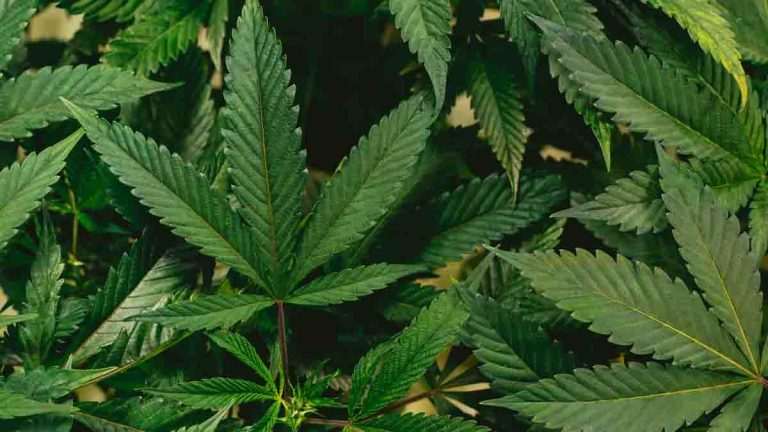What Country Has The Best Coffee
Coffee is, without a doubt, a flavorful beverage that virtually everyone enjoys. However, few of us are fully aware of its history or the origins of those delectable magic beans.
Coffee is consumed on a daily basis by people all around the world. There are many great coffees to savor because there are so many different ways to brew coffee around the world. If you think of delicious coffee, the first country that comes to mind is Italy, you’d be astonished at how wrong you are! Italians know how to make a great espresso shot, Flat whites are popular in Australia, whereas Americanos are popular in the United States.
However, following extensive taste testing by coffee professionals. They discovered that the best coffee originates from Africa,. However, in this post, we’ll look at various features of the best coffee on the planet.
We are here to unveil a list of the countries that produce the best coffee beans in the world by introducing you to some geography, history, and mind-blowing statistics! To see them, scroll down!
Which country has the best coffee in the world?
Table of Contents

Coffee is a complicated beverage. It contains a wide range of fragrances and flavors. And everyone’s palate is different all around the world. When someone says this is the best-tasting coffee, what they really mean is that this particular coffee suits their taste buds perfectly. Taste cannot be defined in the same way for everyone.
- Taste is a personal experience for each person. It is influenced by:
- Your mood and stress levels have an impact on your brain’s ability to sense flavors.
- Your culinary preferences are influenced by your upbringing.
- Taste receptors can be influenced by medication and food.
- Taste training can help you learn to recognize flavors (just like wine tasting).
- You have an inherent predisposition to perceive diverse flavors.
- Your taste receptors may also be affected by items you’ve previously consumed. A memory might be associated with a happy or negative experience.
As a result, “Tanzania Peaberry Coffee” is the world’s most popular coffee. But, wait, didn’t I just mention that taste is influenced by a wide range of factors?
Yes, of course! But there’s a reason why Tanzania peaberry coffee is regarded as the best in the world.
The reason for this is that it has all of the benefits that coffee has to offer. It’s a high-quality arabica coffee that’s usually classified as premium. Coffee cultivated in damp locations, such as hills, develops a rich flavor and long-lasting scent, ranging from faint to very strong characteristics. And that is exactly what this coffee is.
It is grown on Africa’s Mount Kilimanjaro and Mount Meru, which provide perfect growing conditions for coffee plants. This coffee has a rich and deep flavor profile with sweet and flowery undertones.
With the most noticeable flavor of the coffee, you receive undertones of chocolate and black currants. The whole thing is then brought to a close with a beautiful note.
In addition, a medium roast is the best choice for this coffee. Fruity aromas such as coconut, lemon, and pineapple can now shine through. You may detect winey undertones as well as a silky texture.
Other countries known for a wide range of producing one of the best coffee in the world is;
- Ethiopia
We owe some of the best coffee beans to Third World countries, as you’ll notice throughout this piece. Most of you would be shocked to learn that Ethiopians discovered the first coffee plant in the 9th century! According to legend, a goat herder discovered it after noticing how invigorated his herd seemed after grazing there.
Ethiopia continues to be one of the world’s top coffee producers. Only last year, they produced approximately 393,000 metric tons of coffee! Yirgacheffe and Sidama are the two most well-known varieties, both with a slightly sweet flavor. The first, on the other hand, is noted for its gentle fruit notes and flowery perfume, making it more delicate.
- Kenya
In Eastern Africa, we have Kenya. Kenya is known to be the home to some of the world’s best coffee beans. Even though these countries are physically close to one another, there are significant disparities in their coffee production potential.
Kenya produces nine times less coffee than Ethiopia on average. What is the explanation for this? The not-so-comfortable weather. Farms, for example, we’re battling to recover from droughts last year, and the year before that, they were dealing with the effects of the El Nio Southern Oscillation. Kenyan coffee beans, on the other hand, are the best! SL-28 is the most well-known variety. These beans have a lovely red berry and black currant flavor, despite their unusual moniker.
- Brazil
There isn’t a single coffee list that doesn’t include Brazil. In the early 1700s, Brazil saw its first coffee plantation. The seeds were allegedly smuggled into Brazil after a diplomat captivated the Portuguese governor’s wife, who surreptitiously presented him with a bouquet containing coffee seeds.
Away from the legends and back to the realities, Brazil produced 45 million coffee bags last year and is one of the world’s leading coffee exporters. The smooth, nutty flavor, with a hint of bittersweet chocolate, is what makes these beans so desirable.
- Indonesia
This southeastern Asian country’s islands produce some of the world’s best coffee today. The substantial body of these beans, complemented with a subtle nutty flavor and a hint of chocolate, with just the proper amount of acidity, distinguishes them.
- Guatemala
Heading north, there’s a country that’s much smaller than Colombia, yet produces some of the best coffee beans in the world! Guatemalans began growing coffee in the late 1800s, shortly after the introduction of chemical dyes in Europe, which devastated Guatemala’s indigo industry.
Since then, production figures have risen steadily, with the country producing roughly 3 million coffee bags last year. However, due to a reduction in planted areas, that number may fall in 2018. Guatemalan coffee, on the other hand, has a rich, sweet flavor that is akin to chocolate when it comes to the taste of the beans. The flavors are due to the volcanic soil beneath the crops.
- Rwanda
This was never a country known for its exceptional coffee. They were, however, the first African country to organize a Cup of Excellence tournament, and they are now producing great coffee beans!
What is the number 1 coffee in the world?

Jamaican Blue Mountain
This is one of the most expensive coffees in the world, growing at the summit of Jamaica’s Blue Mountains. Blue Mountain coffee beans are produced in small quantities every year.
Japan imports a large amount of Caribbean produce. It has a lovely rich flavor and a strong caffeine kick that will keep you alert for several hours.
Colombian Coffee
This coffee contains a significant amount of caffeine and is available in a variety of strengths (whichever you might prefer).
Colombian coffee has a well-deserved reputation in the coffee industry; it is the world’s third-largest producer of beverages.
Turkish Coffee
In every region of the Ottoman empire, it was a necessary trademark. Turkish coffee has its own personality, from preparation to serving; good Turkish coffee should be brewed in a copper cezve (a tiny pot used to simmer the coffee) to assure the best taste and quality.
The coffee has a thick and foamy consistency that is excellent and something you should experience if you ever visit Turkey. Turkish coffee is usually served with water to help cleanse the palate before the coffee’s strong flavor.
Italian Coffee
Italians have obviously mastered their profession when it comes to food and drinks lovers. In Italy, coffee is a highly serious business, therefore you should treat it with care and do some research before uttering any random coffee lingo! As a result, it’s no wonder that Italian coffee is regarded as among the greatest in the world.
Nowadays, the majority of well-known coffee blends available in coffee shops have Italian names. Cafe latte, americano, macchiato, and cappuccino are excellent examples. After dinner, it is usual in Italy to give or drink caffè.
Civet Coffee
Civet Coffee is one of the world’s most costly and delicious coffees. The feces of the Asian Palm Civet are used to make Civet or Luwak Coffee. Although it may appear revolting, this little fella’s (Palm Civet) feces can be regarded as gold!
Which country is better at producing coffee

Brazil is the world’s largest producer of coffee. Nearly 40 percent of the world’s coffee supply is produced by the country alone. The climate in many parts of Brazil is ideal for growing coffee. The majority of Brazil’s coffee plantations are in Minas Gerais, So Paulo, and Parana.
Brazil sets itself apart from most other coffee-producing countries by drying the coffee cherries in the sun rather than washing them (unwashed coffee).
The 60-kilogram burlap bags used to export beans from Brazil are still the global standard for measuring production and trade.
Who sells the most coffee in the world?
There’s a café on every corner in many cities throughout the world, so it’s no surprise that coffee is one of the world’s most popular commodities. Coffee beans are in high demand practically everywhere, as the world’s third most consumed beverage after water and tea.
Each of the leading coffee-producing countries produces billions of kilograms of beans, which make their way into the hands of eager consumers. In 2020, the International Coffee Organization estimates that 169.6 million 60-kilogram bags of coffee will be produced globally.
While some of the world’s top coffee-producing nations are well known, others may come as a surprise. More than 70 countries produce coffee, but the majority of global output comes from just the top five producers: Brazil, Vietnam, Colombia, Indonesia, and Ethiopia.
- Brazil
Brazil is the world’s largest producer of coffee. Nearly 40 percent of the world’s coffee supply is produced by the country alone. The climate in many parts of Brazil is ideal for growing coffee. The majority of Brazil’s coffee plantations are in Minas Gerais, So Paulo, and Parana.
Brazil sets itself apart from most other coffee-producing countries by drying the coffee cherries in the sun rather than washing them (unwashed coffee).
The 60-kilogram burlap bags used to export beans from Brazil are still the global standard for measuring production and trade.
- Ethiopia
Ethiopia is the country that gave us the Arabica coffee plant and is known for its full-flavored, down-to-earth, and full-bodied coffee beans. Today, this variety of coffee is commonly available in cafés and restaurants all over the world.
All of these top-producing countries are located between the Tropics of Cancer and Capricorn, in what is known as the “Bean Belt.”
- Colombia
Colombia became known as one of the most famous coffee-producing countries thanks to a great advertisement campaign starring a fictional coffee farmer named Juan Valdez. Colombian coffee is praised for its aromatic, mellow, and fruity qualities, making it a popular drink.
- Vietnam
By concentrating on the less expensive Robusta bean, Vietnam was able to carve itself a niche in the worldwide market. Robusta beans contain up to twice as much caffeine as Arabica beans, resulting in a bitter cup of coffee. Despite the fact that coffee has been cultivated in the region for over a century, output exploded in the 1990s.
More than 40% of the world’s Robusta bean crop is now produced in Vietnam.
Vietnam’s coffee production is likewise exceptionally high. Coffee yields in the country are significantly higher than in other top coffee-producing countries.
- Indonesia
Kopi Luwak—a sort of bean chewed and defecated by the Asian palm civet—is one of the rarest coffees in the Western world, and it comes from Indonesia. The price of a cup of coffee produced from these beans could range from $35 to $100.
Other countries include; Honduras, Rwanda, and Columbia
What’s the world’s most expensive coffee?
Have you ever wondered which coffees are the most costly in the world? Did you think your morning latte was pricey? Then reconsider, because we’re about to show you the worlds’ costly coffees.
- Black Ivory Coffee
The most expensive coffee in the world is Black Ivory Coffee. It costs roughly $1,000 per pound, to begin with, but has been known to sell for as much as $1,500 per pound. The Black Ivory Coffee Company is headquartered in Northern Thailand, and like the Kopi Luwak coffee we discussed earlier, they’ve invented a one-of-a-kind coffee-making technique that most people would find hard to believe. On their property, Black Ivory Coffee makes coffee by feeding Arabica cherries to elephants.
They then wait for the elephant to break down and digest the cherries before collecting the beans from their feces.
When the beans transit through the elephant’s digestive system, they pick up new flavors from enzymes while breaking down undesirable proteins in the beans that provide a bitter taste, similar to the civet’s digestive system.
This technique assures that Black Ivory Coffee can provide a smooth, flavorful cup of coffee.
Due to the rarity of each pound, Black Ivory Coffees’ price reflects the rarity of each pound, which is why it costs $1,000 a pound.
- Finca El Injerto
It is the world’s second most expensive coffee. The small rich beans from which this coffee is manufactured are exceptionally rare, which accounts for the majority of the reason for its high price. Anything this rare is generally very expensive, and this coffee is no exception.
Finca El Injerto has won the cup of excellence seven times and finished second in the competition the other times it didn’t win, so it’s simple to see why the coffee is so expensive.
Finca El Injerto also features a one-of-a-kind washing technology that improves grain quality by washing the beans in a single channel and breaking them down twice.
Coffee fans and connoisseurs all over the world have fallen in love with this brand and are willing to pay the exorbitant $500+ price tag for it.
Conclusion
The best-tasting coffee, according to coffee connoisseurs and experts alike, originates from Africa. South and Central American countries. Although the origins of a cup of coffee are important, choosing the correct coffee equipment to make it is equally crucial! As a result, pick both judiciously to ensure a tasty brew every time!
With rising global temperatures, growing decent coffee could become more difficult. Finding newer and hybrid blends of coffee beans is critical for future-proofing good and continuous growth of coffee beans.
Several studies and research teams have discovered wild coffee species flourishing off the coast of Côte d’Ivoire and in specific parts of Sierra Leone, which could be the solution to our coffee production challenges. These coffee plants produced coffee that tastes identical to the well-known Arabica bean and flourished at higher temperatures.
Despite the fact that the future of coffee production around the world is uncertain, our common love of a good cup of coffee in the morning will drive creative solutions, even in the face of shifting climate patterns.







